Abstract
1. The activity of neurones in the mesencephalic nucleus of the fifth nerve that respond to forces applied to the teeth were recorded using extracellular microelectrodes; the properties of these neurones have been studied. 2. Electrophysiological evidence consistent with the view that primary afferent intraoral mechanoreceptor fibres have their cell bodies in the trigeminal mesencephalic nucleus is presented. 3. Two groups of intraoral mechanoreceptor neurones were found. The first group, the periodontal mechanoreceptor neurones, which have been described by previous workers, responded to electrical stimulation of the ipsilateral superior or inferior dental nerves and to forces applied to single teeth in the ipsilateral maxilla or mandible respectively. The response characteristics of the mesencephalic periodontal mechanoreceptor neurones differed in two respects from those observed in peripheral nerve studies by previous workers: (a) there were no spontaneously active neurones, and (b) there were no neurones that responded for over 10 sec to a sustained application of a suprathreshold mechanical stimulus to the teeth. The second group, not described before, responded to electrical stimulation of the ipsilateral palatine nerve, and responded to forces applied to all the teeth in the maxillary arch, both contralateral and ipsilateral as well as to forces applied to the nose and hard palate. The site of these receptors is unknown. They have been termed 'Type P' intraoral mechanoreceptors. 4. The recording sites of both the periodontal and Type P mechanoreceptor neurones were all situated in the caudal part of the mesencephalic nucleus of the fifth nerve.
Full text
PDF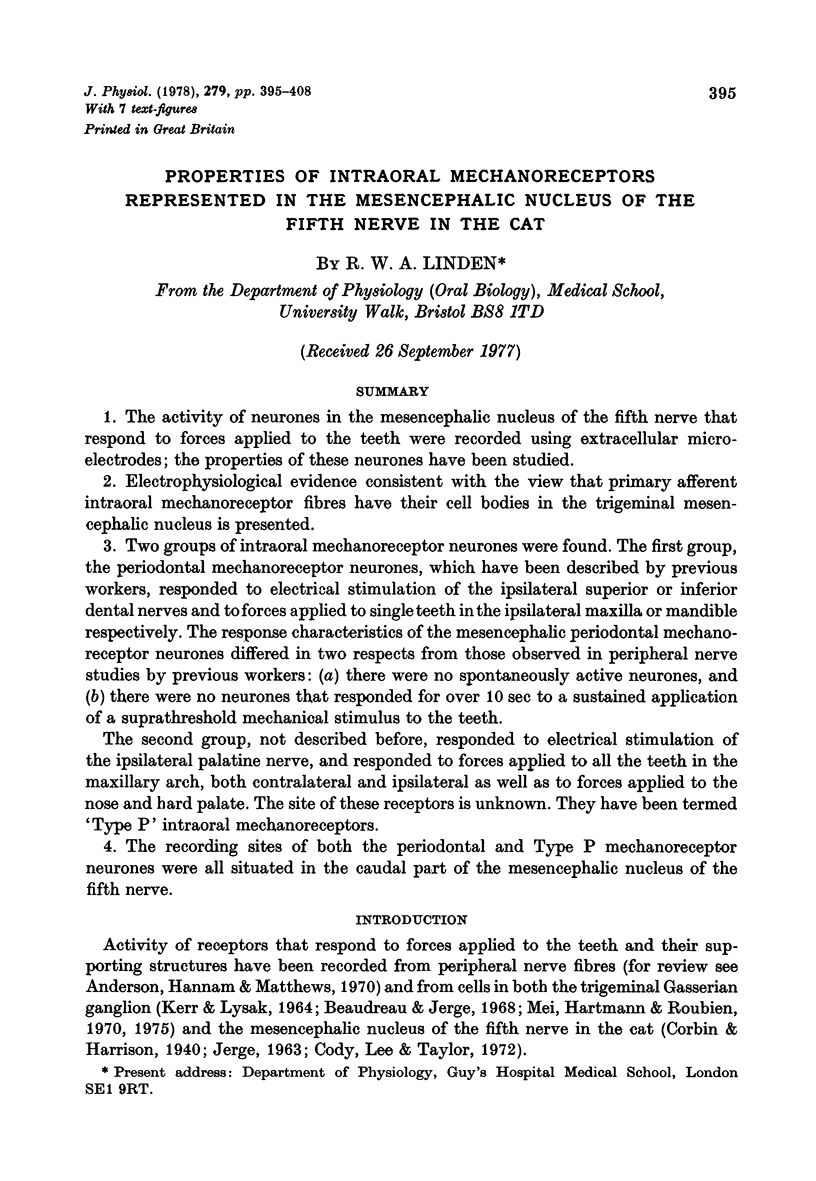
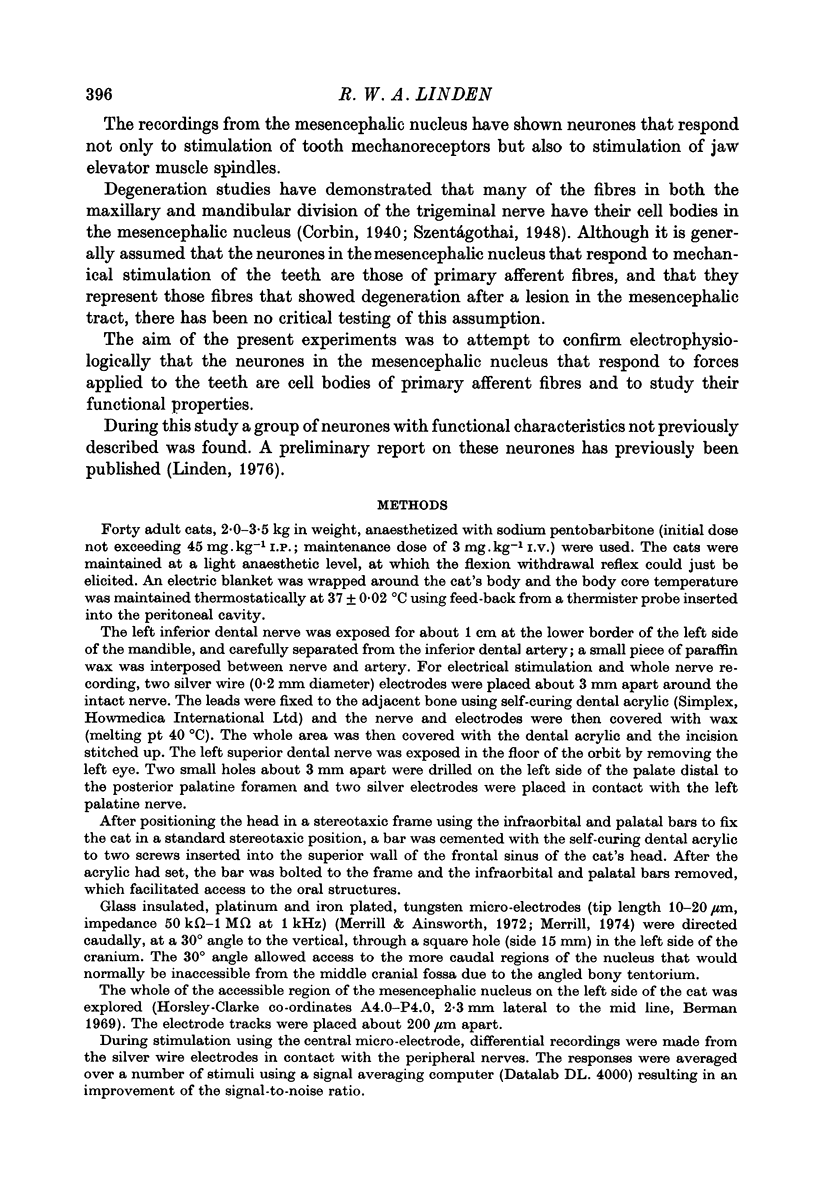
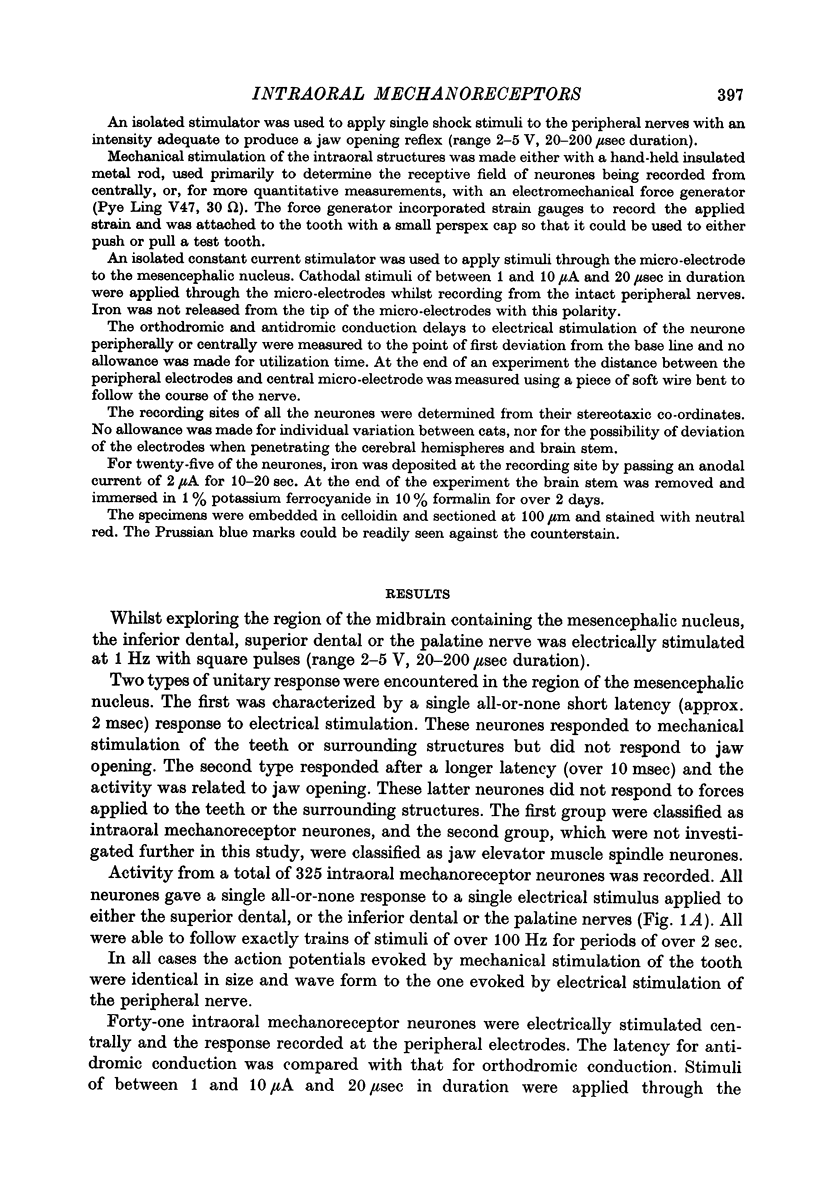
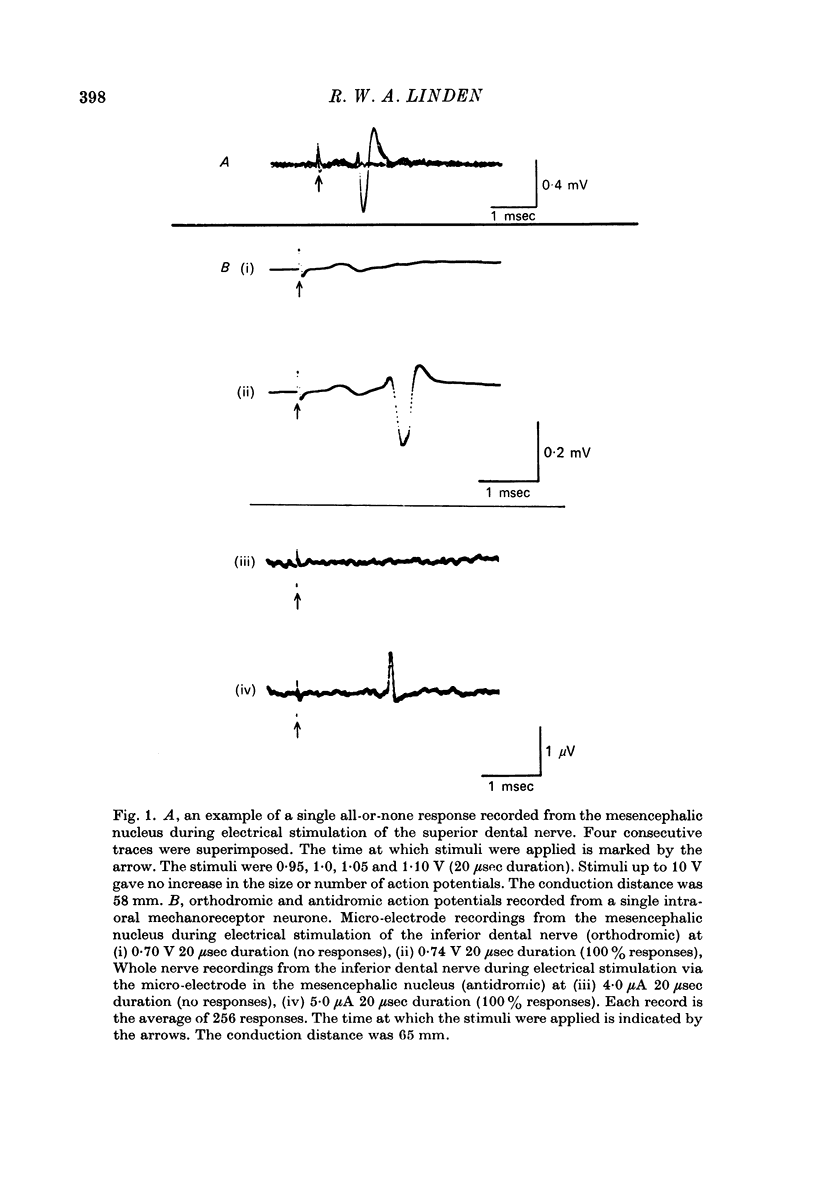
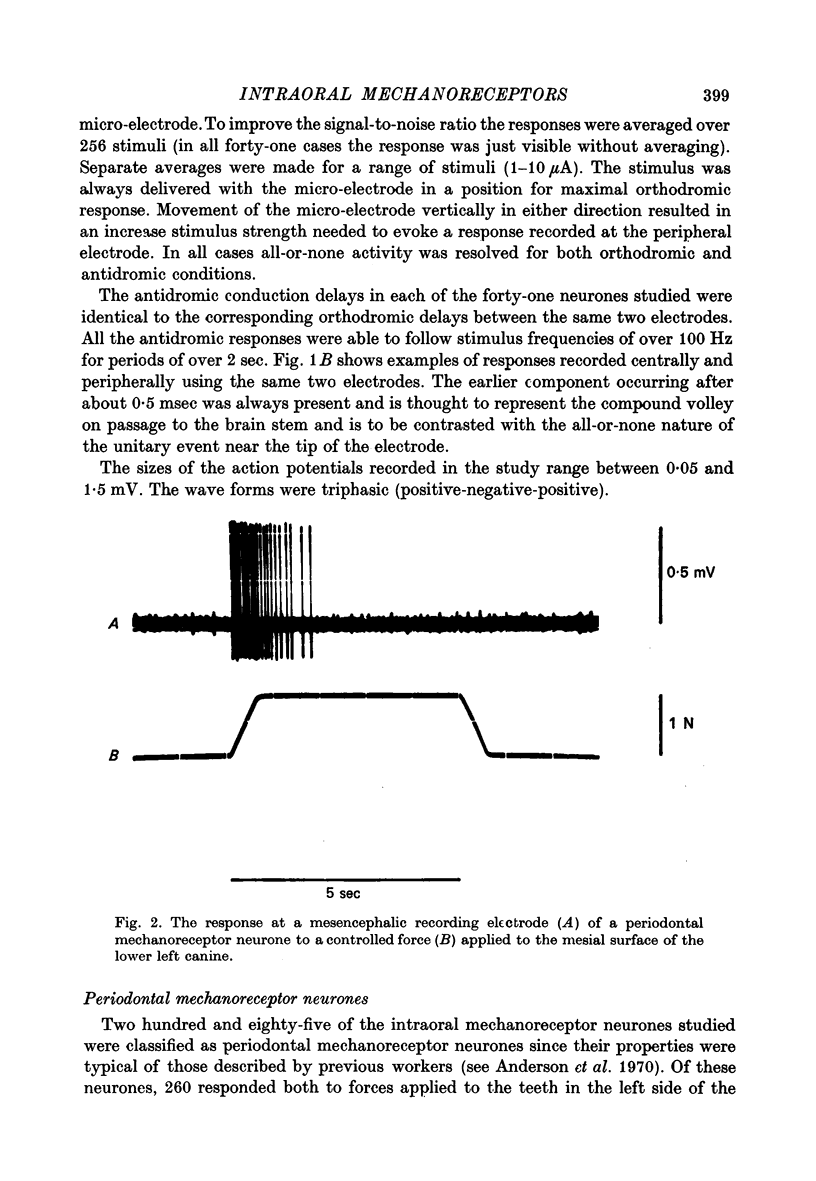
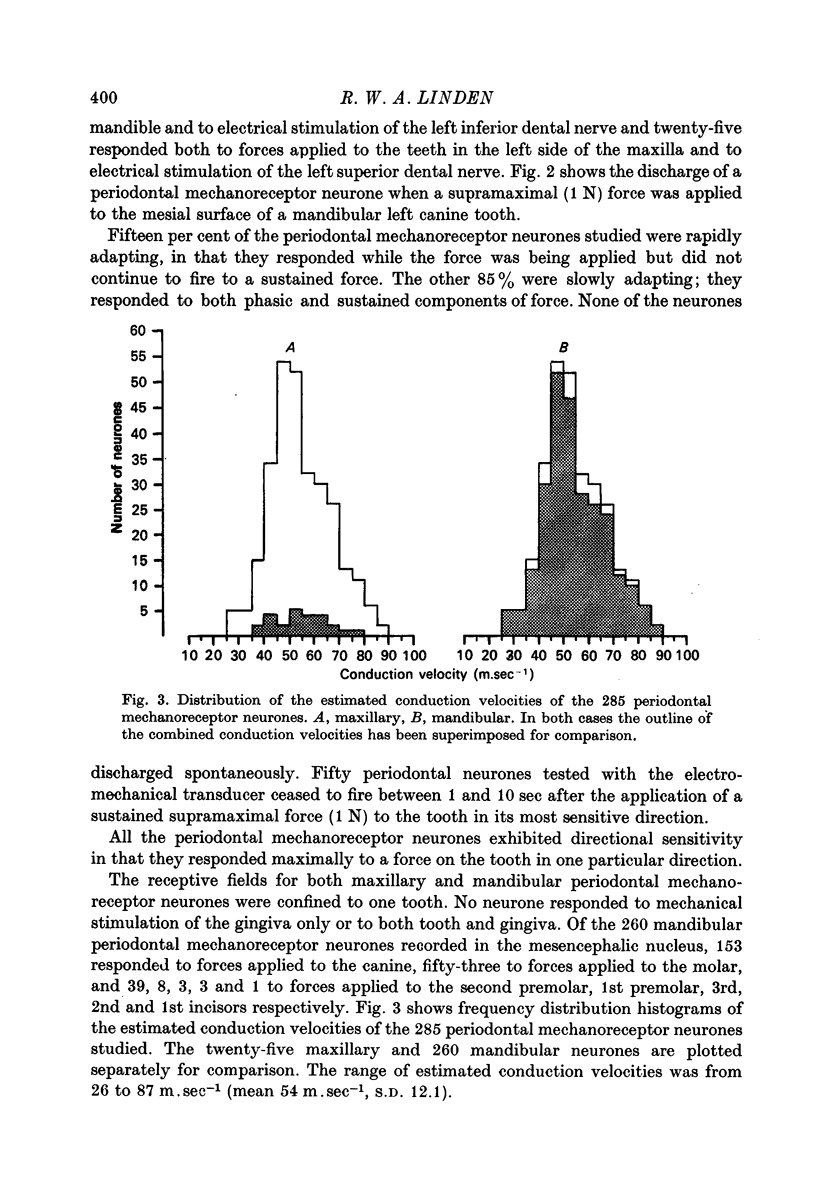
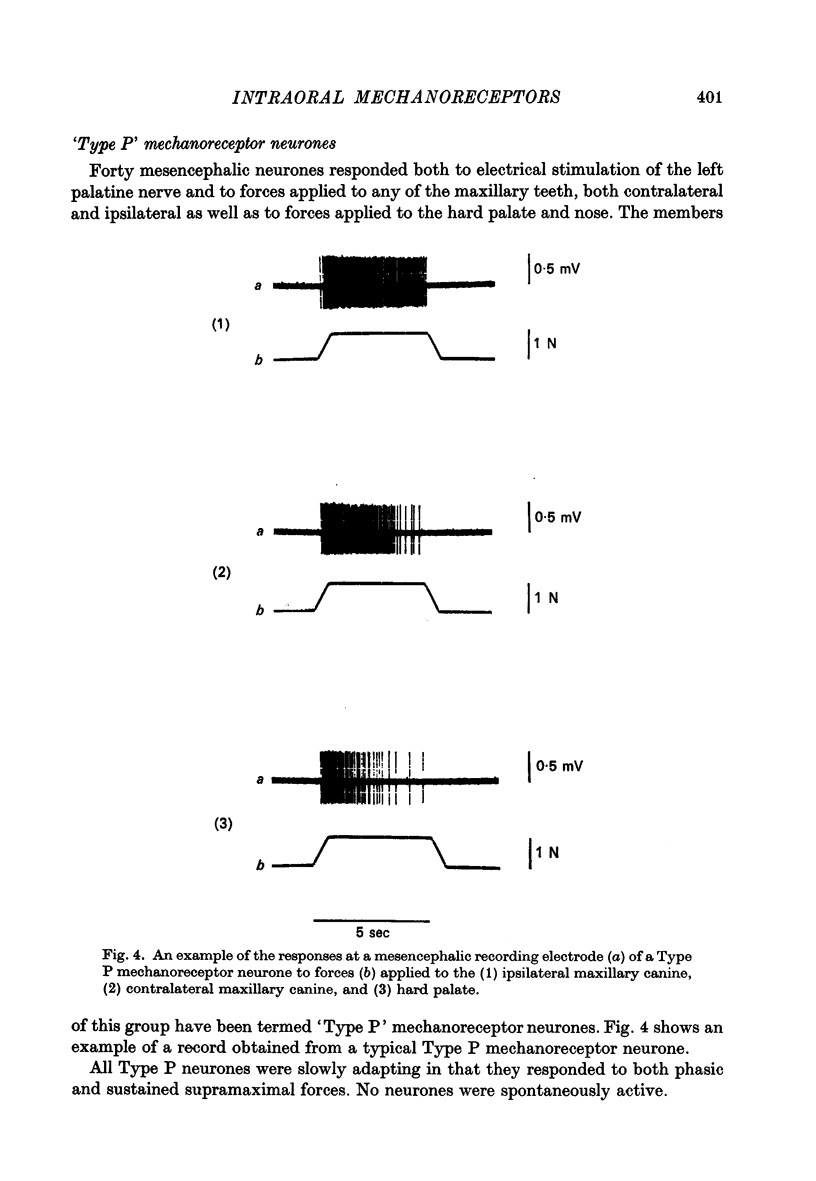
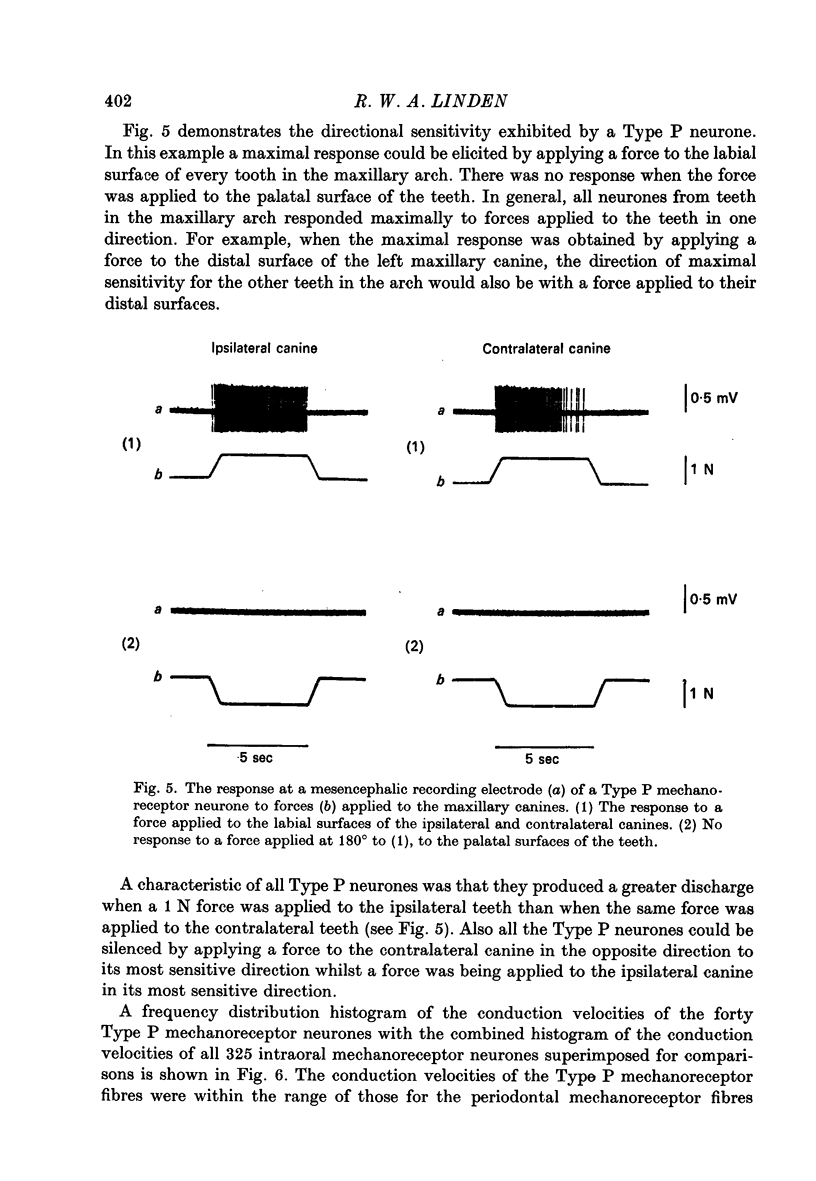
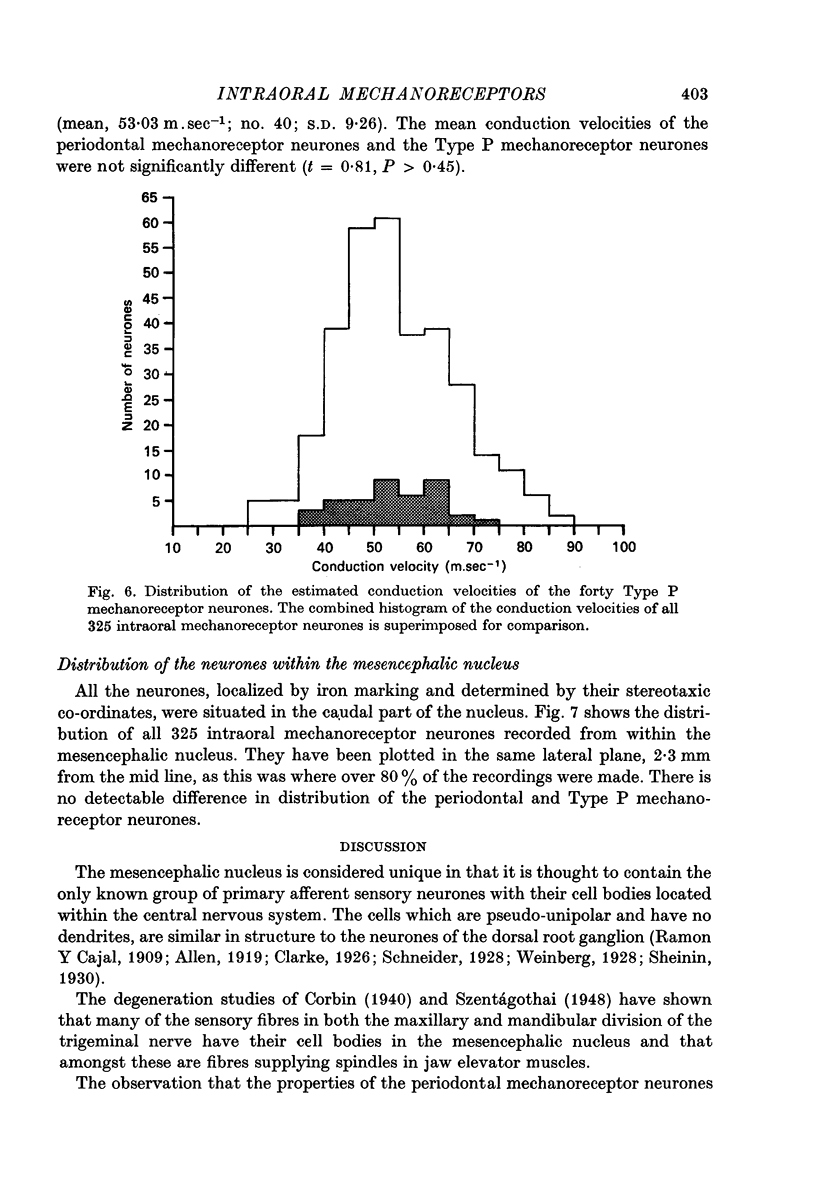
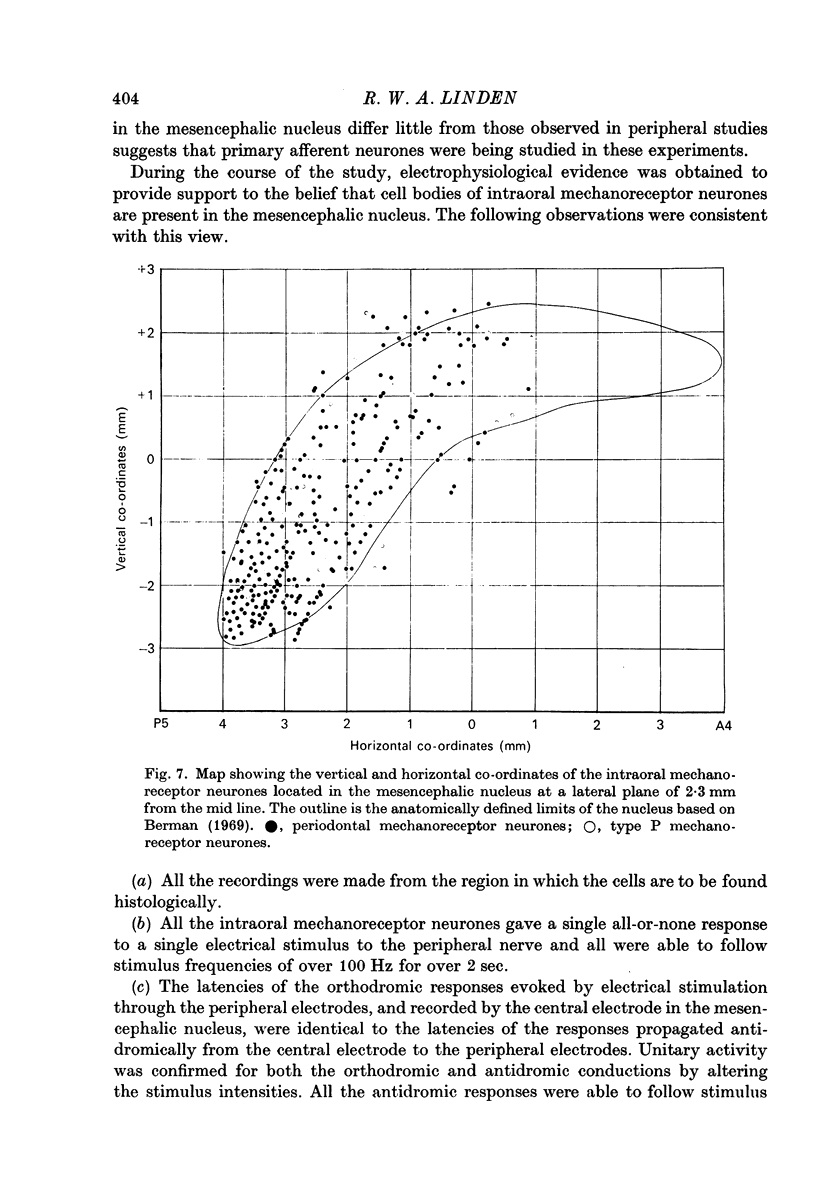
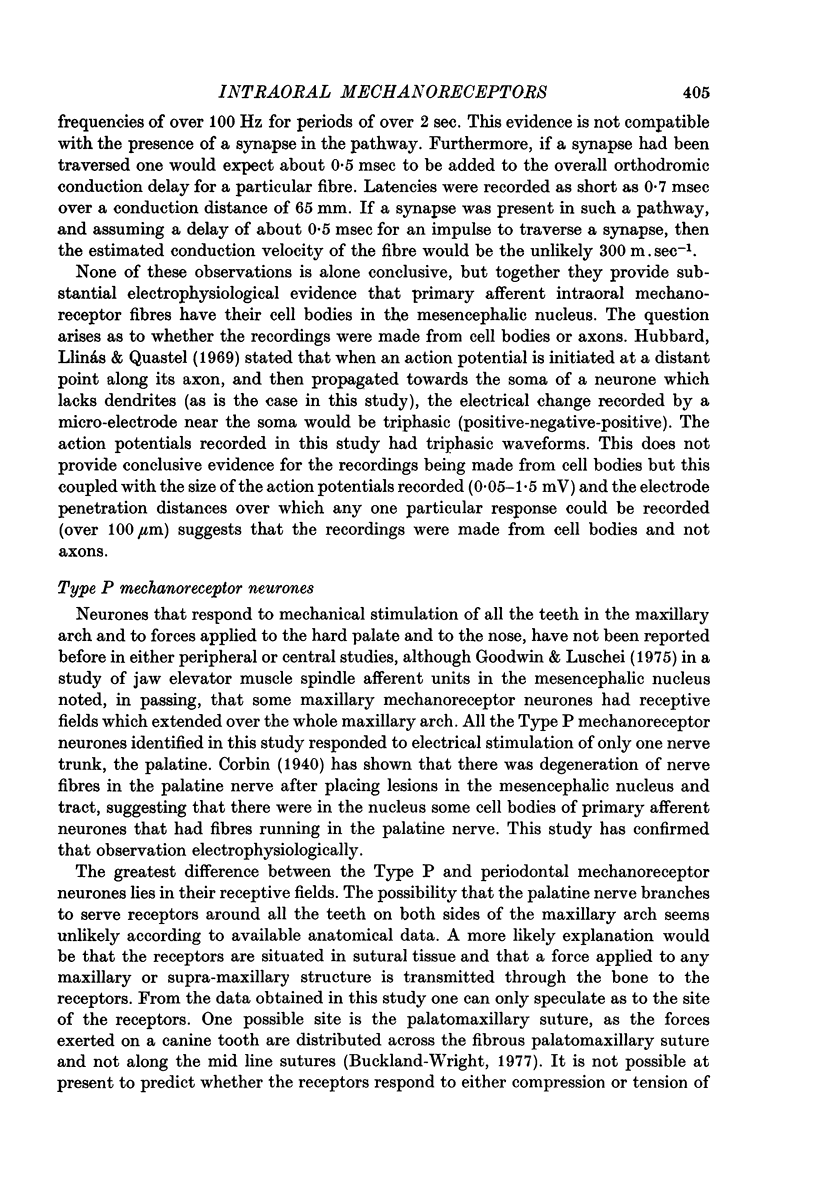
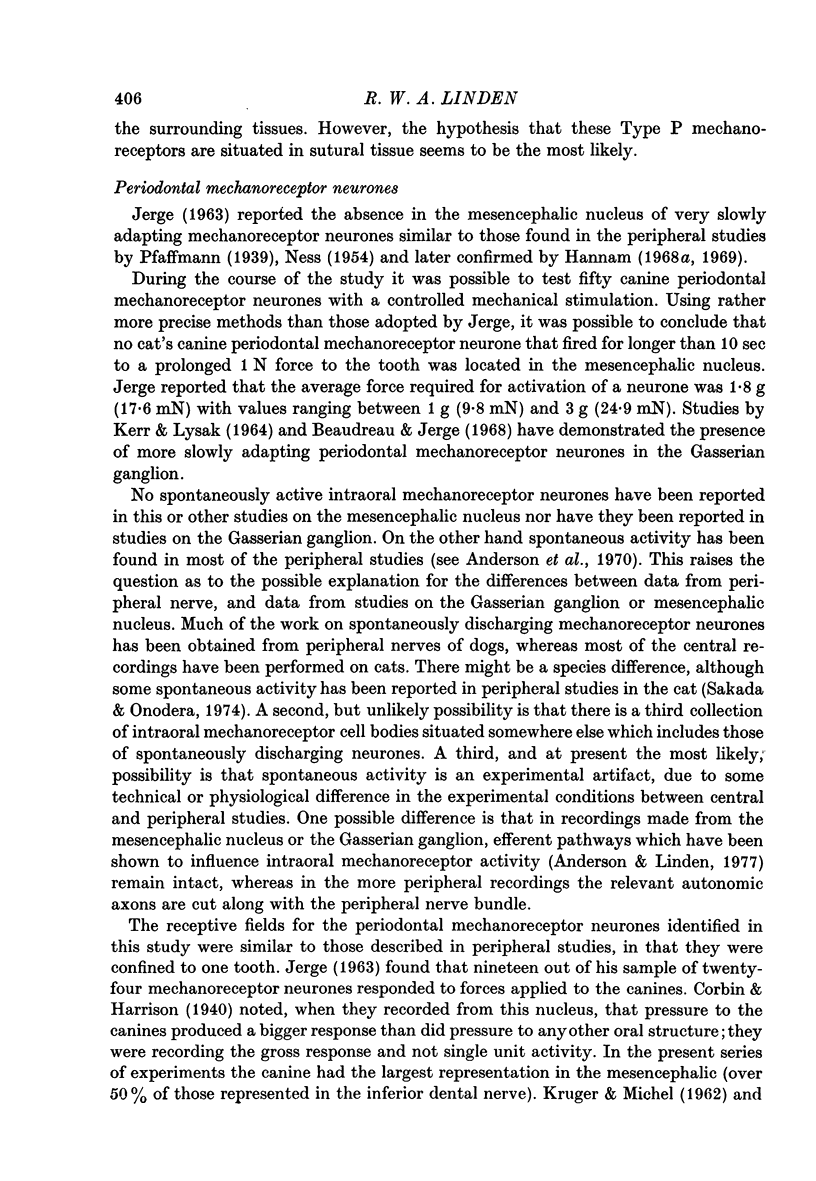
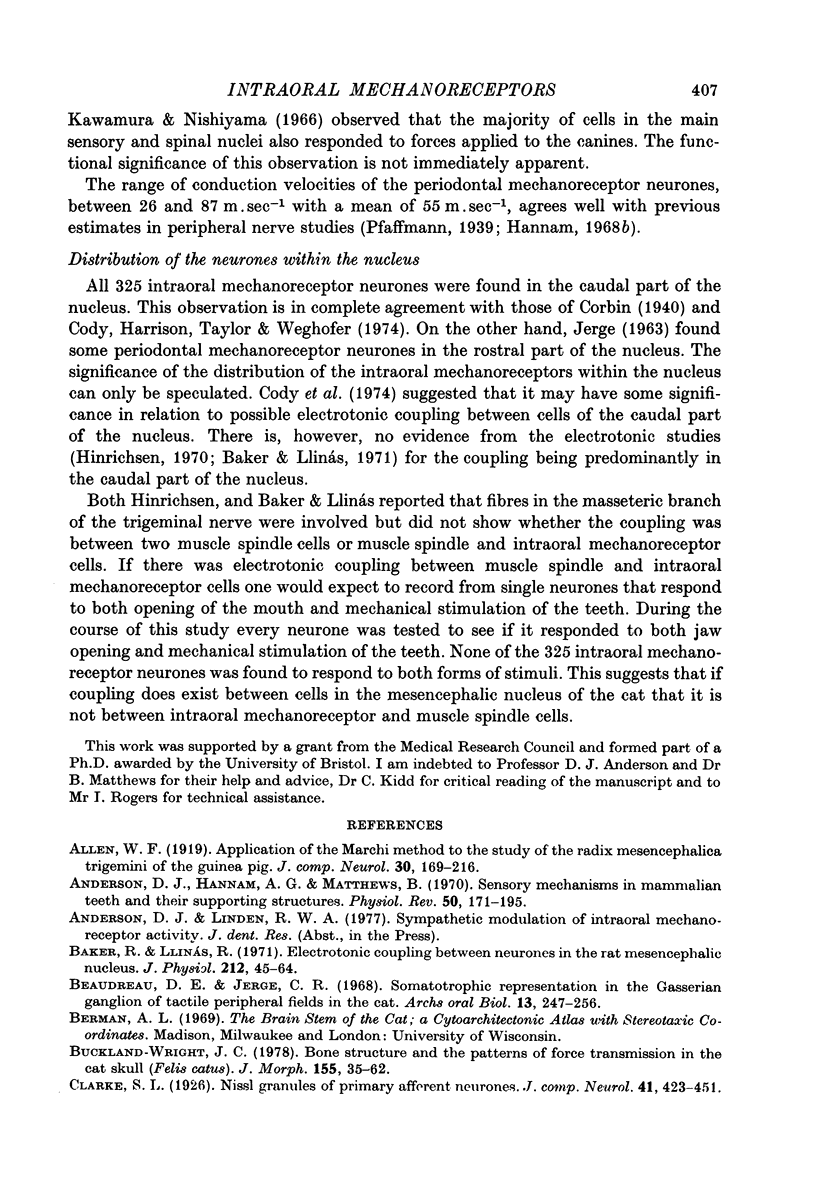
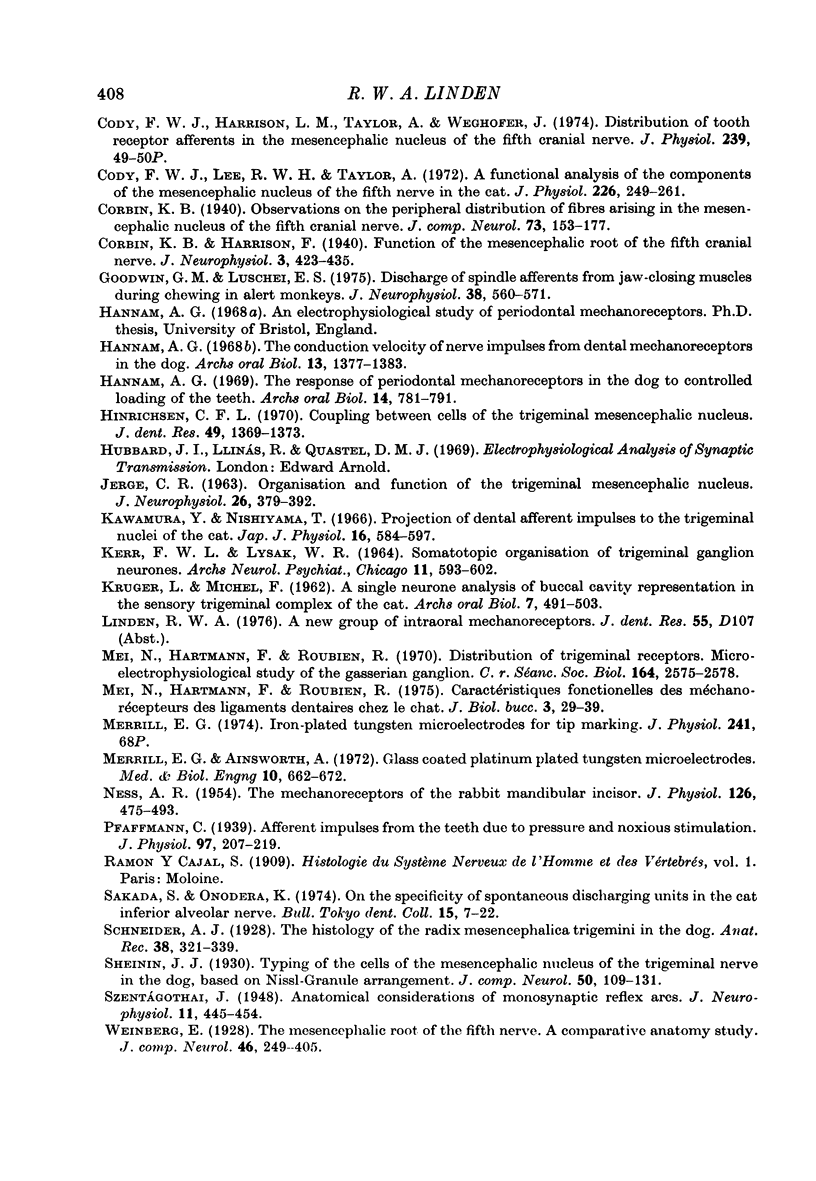
Selected References
These references are in PubMed. This may not be the complete list of references from this article.
- Anderson D. J., Hannam A. G., Mathews B. Sensory mechanisms in mammalian teeth and their supporting structures. Physiol Rev. 1970 Apr;50(2):171–195. doi: 10.1152/physrev.1970.50.2.171. [DOI] [PubMed] [Google Scholar]
- Beaudreau D. E., Jerge C. R. Somatotopic representation in the Gasserian ganglion of tactile peripheral fields in the cat. Arch Oral Biol. 1968 Mar;13(3):247–256. doi: 10.1016/0003-9969(68)90124-6. [DOI] [PubMed] [Google Scholar]
- Buckland-Wright J. C. Bone structure and the patterns of force transmission in the cat skull (felis catus). J Morphol. 1978 Jan;155(1):35–61. doi: 10.1002/jmor.1051550104. [DOI] [PubMed] [Google Scholar]
- Cody F. W., Lee R. W., Taylor A. A functional analysis of the components of the mesencephalic nucleus of the fifth nerve in the cat. J Physiol. 1972 Oct;226(1):249–261. doi: 10.1113/jphysiol.1972.sp009983. [DOI] [PMC free article] [PubMed] [Google Scholar]
- Goodwin G. M., Luschei E. S. Discharge of spindle afferents from jaw-closing muscles during chewing in alert monkeys. J Neurophysiol. 1975 May;38(3):560–571. doi: 10.1152/jn.1975.38.3.560. [DOI] [PubMed] [Google Scholar]
- Hannam A. G. The conduction velocity of nerve impulses from dental mechanoreceptors in the dog. Arch Oral Biol. 1968 Nov;13(11):1377–1383. doi: 10.1016/0003-9969(68)90161-1. [DOI] [PubMed] [Google Scholar]
- Hannam A. G. The response of periodontal mechanoreceptors in the dog to controlled loading of the teeth. Arch Oral Biol. 1969 Jul;14(7):781–791. doi: 10.1016/0003-9969(69)90169-1. [DOI] [PubMed] [Google Scholar]
- Hinrichsen C. F. Coupling between cells of the trigeminal mesencephalic nucleus. J Dent Res. 1970 Nov-Dec;49(6 Suppl):1369–1373. doi: 10.1177/00220345700490063701. [DOI] [PubMed] [Google Scholar]
- JERGE C. R. Organization and function of the trigeminal mensencephalic nucleus. J Neurophysiol. 1963 May;26:379–392. doi: 10.1152/jn.1963.26.3.379. [DOI] [PubMed] [Google Scholar]
- KERR F. W., LYSAK W. R. SOMATOTOPIC ORGANIZATION OF TRIGEMINAL-GANGLION NEURONES. Arch Neurol. 1964 Dec;11:593–602. doi: 10.1001/archneur.1964.00460240025003. [DOI] [PubMed] [Google Scholar]
- KRUGER L., MICHEL F. A single neuron analysis of buccal cavity representation in the sensory trigeminal complex of the cat. Arch Oral Biol. 1962 Jul-Aug;7:491–503. doi: 10.1016/0003-9969(62)90137-1. [DOI] [PubMed] [Google Scholar]
- Kawamura Y., Nishiyama T. Projection of dental afferent impulses to the trigeminal nuclei of the cat. Jpn J Physiol. 1966 Oct 15;16(5):584–597. doi: 10.2170/jjphysiol.16.584. [DOI] [PubMed] [Google Scholar]
- Mei N., Hartmann F., Roubien R. Caractéristiques fonctionnelles des mécanorécepteurs des ligaments dentaires chez le chat. J Biol Buccale. 1975 Mar;3(1):29–39. [PubMed] [Google Scholar]
- Mei N., Hartmann F., Roubien R. Répartition des terminaisons sensibles du territoire trigéminal. Etude microphysiologique du ganglion de Gasser. C R Seances Soc Biol Fil. 1970;164(12):2575–2578. [PubMed] [Google Scholar]
- Merrill E. G., Ainsworth A. Glass-coated platinum-plated tungsten microelectrodes. Med Biol Eng. 1972 Sep;10(5):662–672. doi: 10.1007/BF02476084. [DOI] [PubMed] [Google Scholar]
- Merrill E. G. Proceedings: Iron-plated tungsten micro-electrodes for tip marking. J Physiol. 1974 Sep;241(2):68P–69P. [PubMed] [Google Scholar]
- NESS A. R. The mechanoreceptors of the rabbit mandibular incisor. J Physiol. 1954 Dec 10;126(3):475–493. doi: 10.1113/jphysiol.1954.sp005223. [DOI] [PMC free article] [PubMed] [Google Scholar]
- Pfaffmann C. Afferent impulses from the teeth due to pressure and noxious stimulation. J Physiol. 1939 Dec 14;97(2):207–219. doi: 10.1113/jphysiol.1939.sp003800. [DOI] [PMC free article] [PubMed] [Google Scholar]
- Sakada S., Onodera K. On the specificity of spontaneously discharging units in the cat inferior alveolar nerve. Bull Tokyo Dent Coll. 1974 Feb;15(1):7–22. [PubMed] [Google Scholar]


